Intel's next-gen Lunar Lake processors will launch in new AI PCs sooner than you think, hot on the heels of Snapdragon X and ARM
Promises of efficient power consumption better than "anything you've ever seen before" are just around the corner.
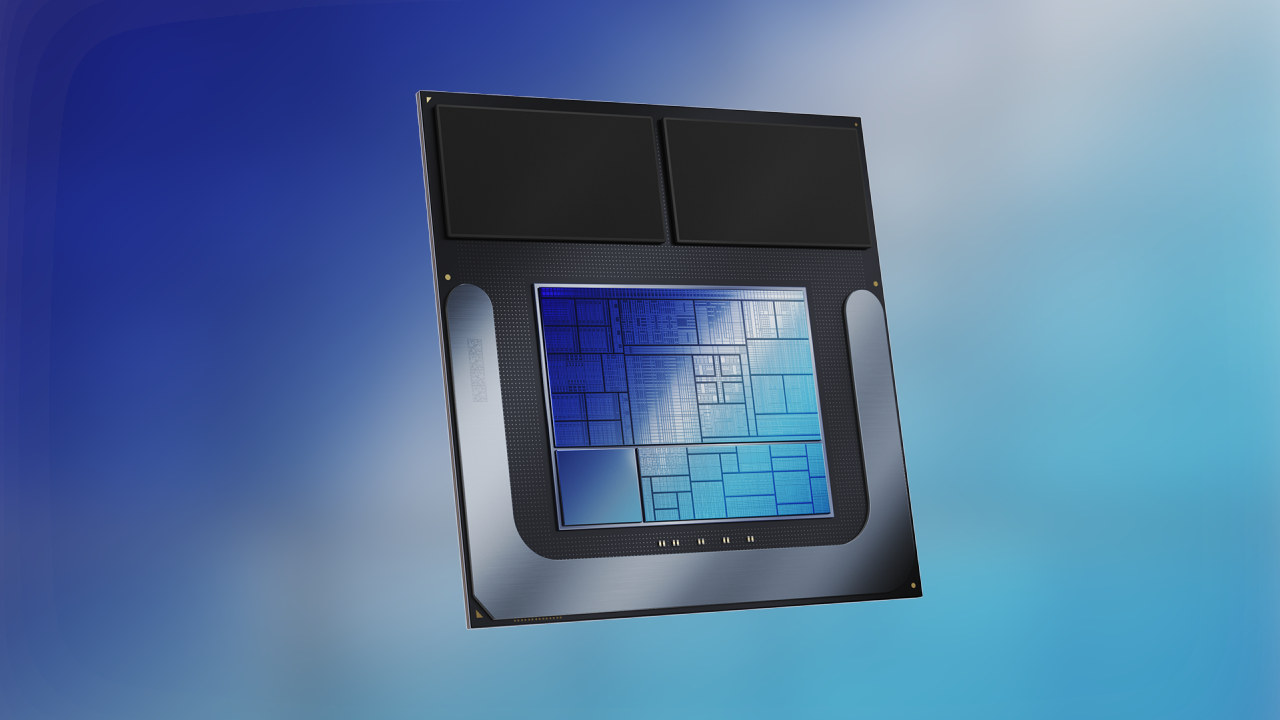
What you need to know
- Intel's next generation of mobile processors, codenamed Lunar Lake, will be released with OEM devices in Q3 2024 (between July and September).
- Primarily focused on AI with an upgraded 45+ TOPS NPU, Lunar Lake will also include Intel's codename 'Battlemage' GPU on what it calls the "XPU" system-on-a-chip.
- Details on new Performance (P-Cores) and Efficiency (E-Cores) will be available later this month, along with Arrow Lake desktop processors following at Computex in June.
Intel has set an official release schedule for its next-generation processors, still codenamed "Lunar Lake," which promises to support all-new Copilot+ AI features. Targeting Q3 2024, covering the months between July and September, consumers can expect to see "more than 80" new laptops boasting AI PC certification "in time for the holiday season."
Building on the current generation of its Core Ultra processors, previously codenamed "Meteor Lake," Intel expects to ship "more than 40 million" AI PCs throughout 2024.
Intel boasts triple the performance over Meteor Lake with the next-generation Lunar Lake chips. While Intel still refers to an overall TOPS score that combines its CPU, GPU, and NPU performance, advertising "45+ TOPS" shows a readiness to tackle Qualcomm's Snapdragon X platform as the "great PC reset" begins and AI PCs become the norm.
Production is already underway for Q3 2024
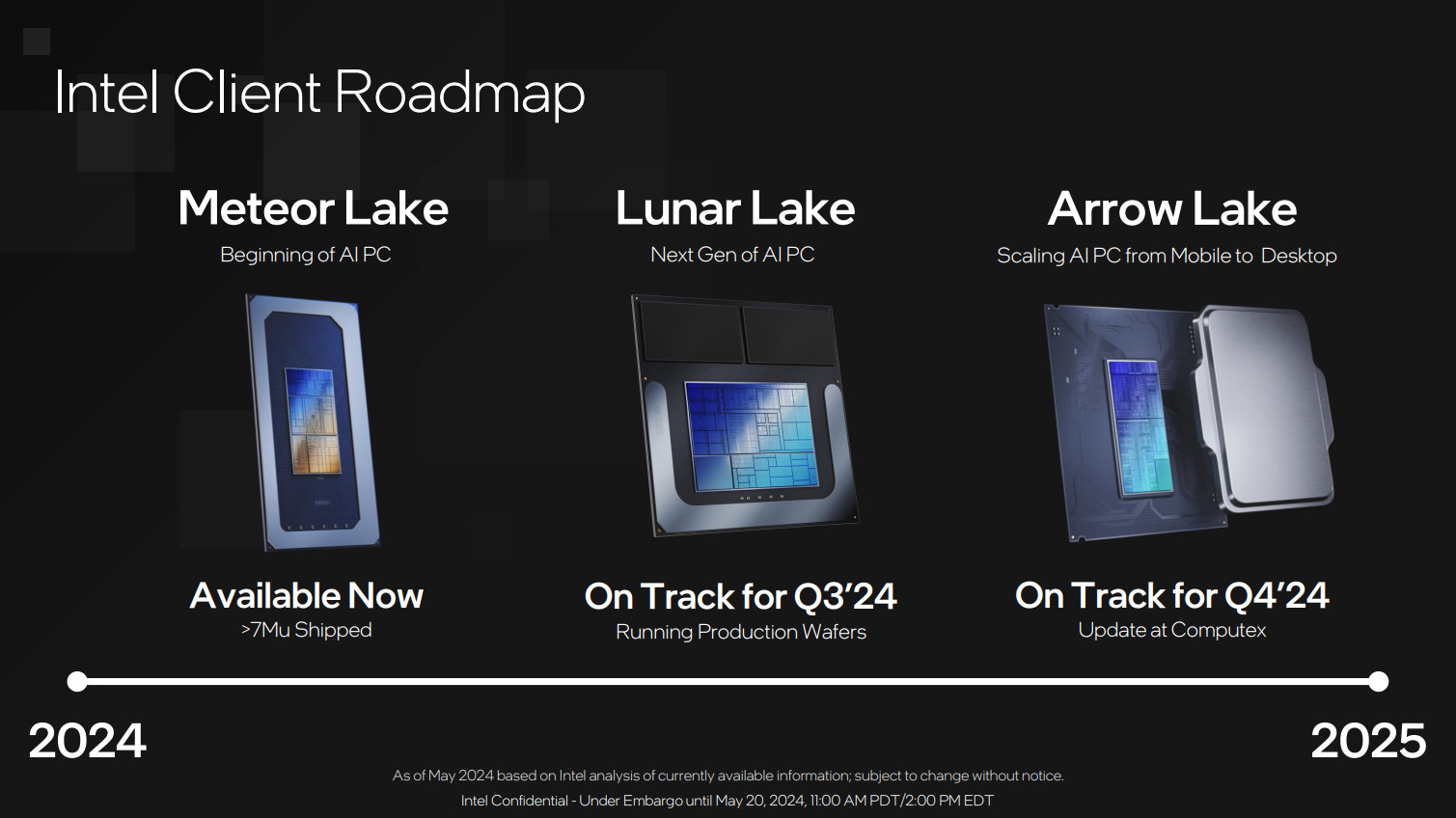
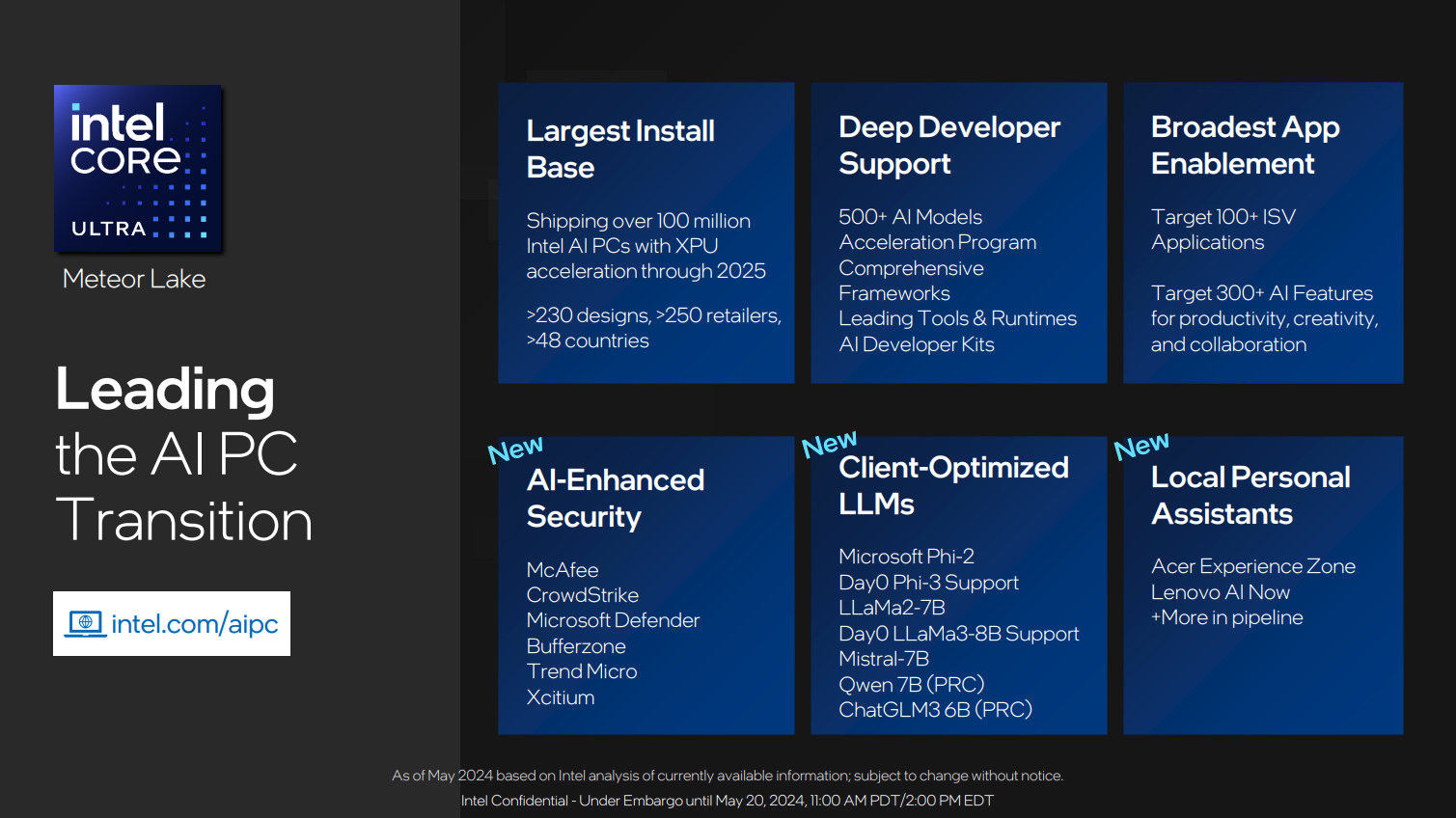
Intel is already mass-producing wafers for Lunar Lake chips and is on track to release devices from "more than 20" OEMs powered by various processors in the new range by Q3 2024. If you were considering upgrading to a new laptop, it's worth holding off until early July to see how these new AI PCs compare to the broad range featuring ARM-based Snapdragon X chips. Intel's priorities mostly align with Qualcomm's, pushing for significant enhancements to battery life with a focus on AI, but Lunar Lake has a few trump cards on its side.
We are excited to see Lunar Lake come to market with a 40+ TOPS NPU which will deliver Microsoft’s Copilot+ experiences at scale when available.
Pavan Davuluri, Microsoft
As exciting as the prospect of a Windows on Arm renaissance is, Intel has the largest install base with traditional x86-64 architecture, which lends to broader support for independent software vendors (ISVs.) Artificial intelligence is an undeniable focus for Lunar Lake, appealing to developers with existing AI projects, including large language models (LLMs) like Microsoft Phi-2 and Llama 2. What's more exciting for Lunar Lake is its promise to support Copilot+ soon after launch. No, Intel doesn't officially support its features from the start, but any NPU rated for over 40 TOPS can run Copilot locally, so Lunar Lake is certainly capable.
New cores and Xe2 Battlemage GPU
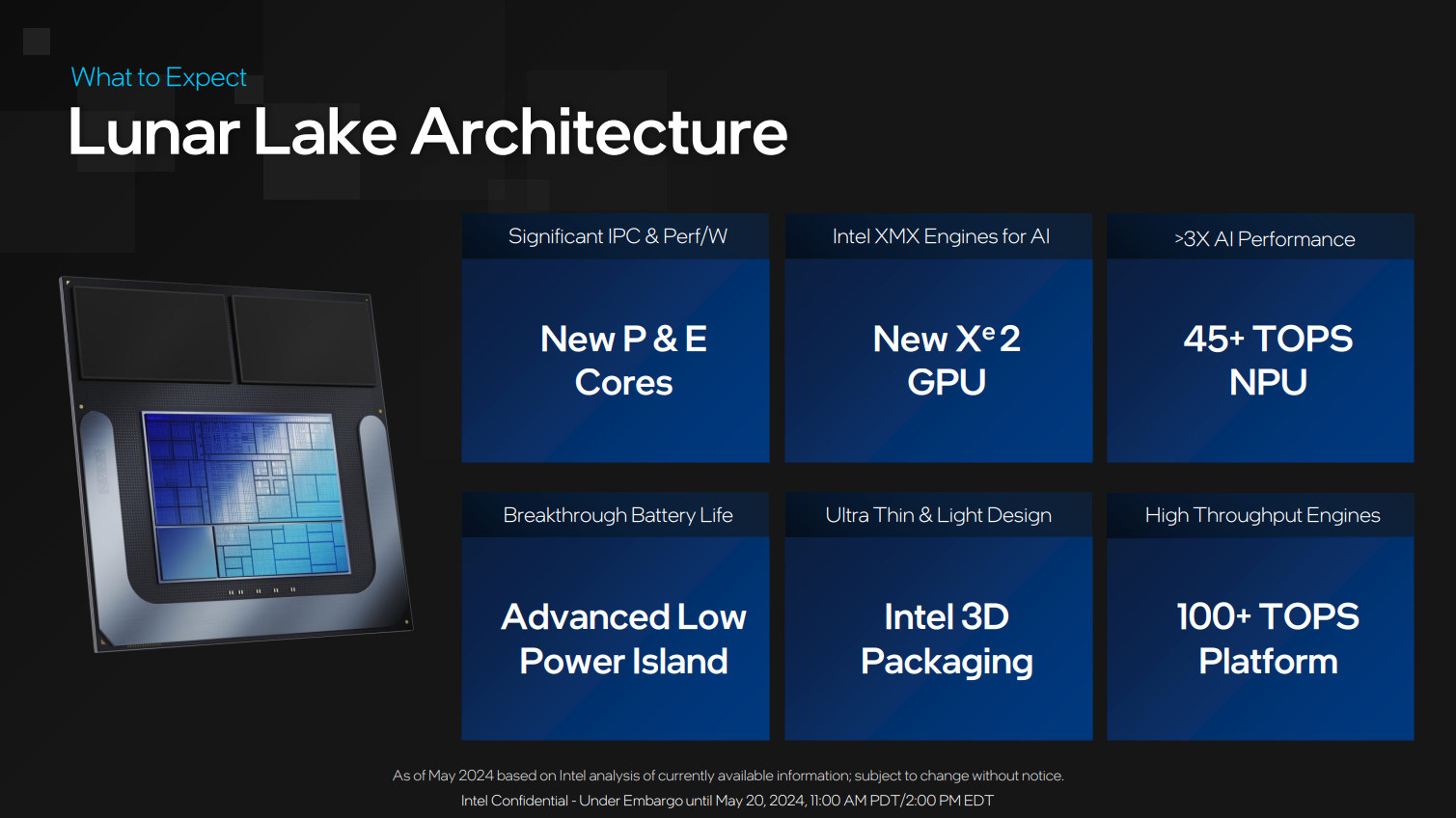
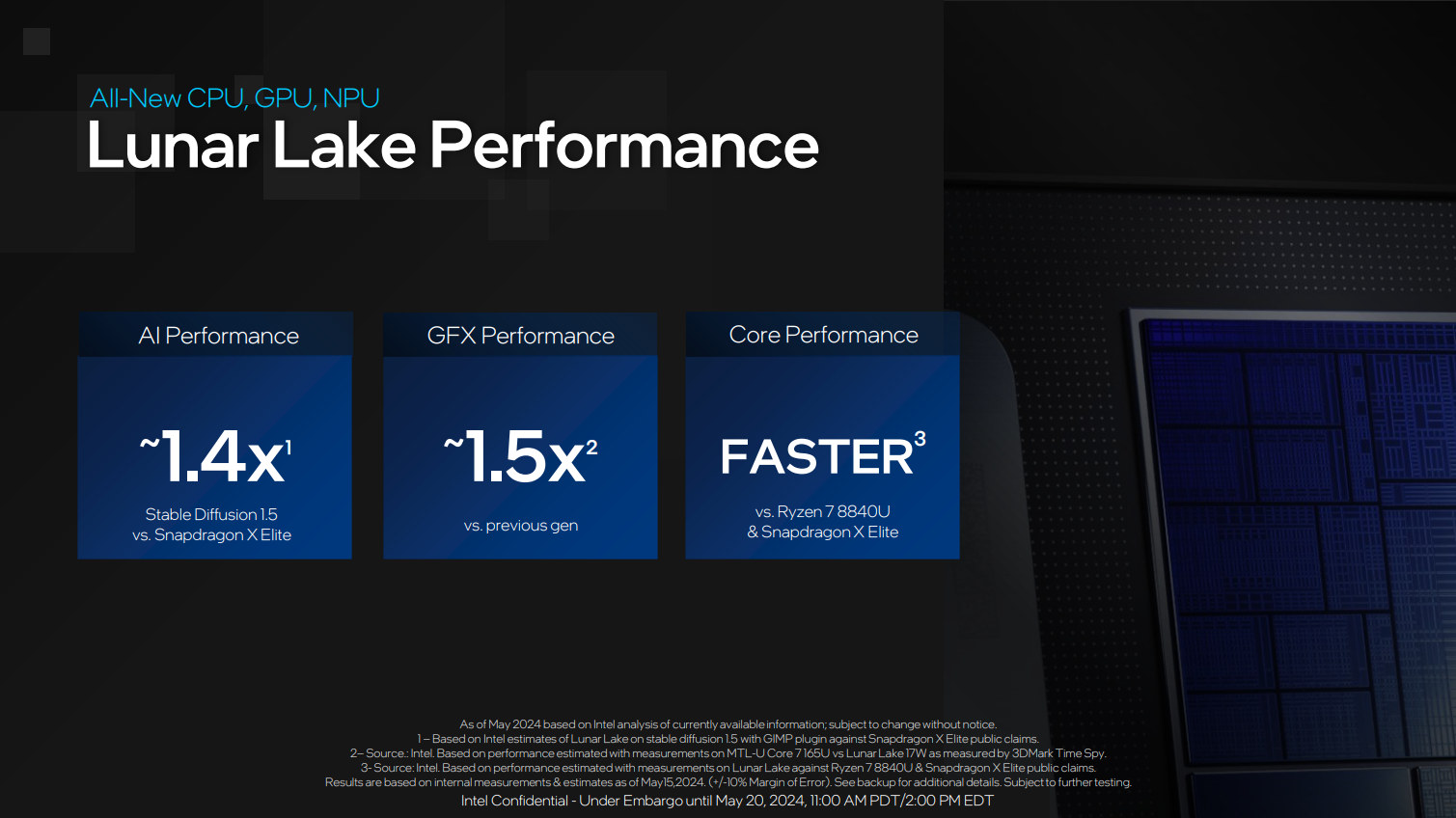
All new "Lion Cove" Performance (P-core) and "Skymore" Efficiency (E-core) additions are coming to the Lunar Lake SoC (or XPU, as the company calls it,) but I'll have to wait until I visit Intel in person to learn more about the specifics. An "Advanced Low-Power Island" upgrade also has Intel doubling down on Low-Power Efficiency (LPE) cores with more than double the compute power over Meteor Lake while simultaneously extending potential battery life with performance-per-watt improvements and upgrades to Intel's Thread Director that monitors it all.
With breakthrough power efficiency and the trusted compatibility of x86 architecture, we will deliver the most competitive offering in our history with Lunar Lake.
Michelle Johnston Holthaus, Intel
On the graphics side, Intel's anticipated and still-codenamed Battlemage GPU IP will appear in Lunar Lake before anywhere else. Its Xe2 Matrix eXtensions (XMX) math engines will handle visual-centric AI acceleration rated at 60 TOPS, bringing the platform to an overall 100+ TOPS. It's still a relatively new metric for measuring AI performance, but Intel defines TOPS as "how fast you could go, but your chosen software will determine how fast you will go." Nevertheless, it's an exciting advancement after Intel already pushed for its Arc graphics in current-gen Core Ultra chips.
Get the Windows Central Newsletter
All the latest news, reviews, and guides for Windows and Xbox diehards.
x86-64 ultralight laptops charge ahead
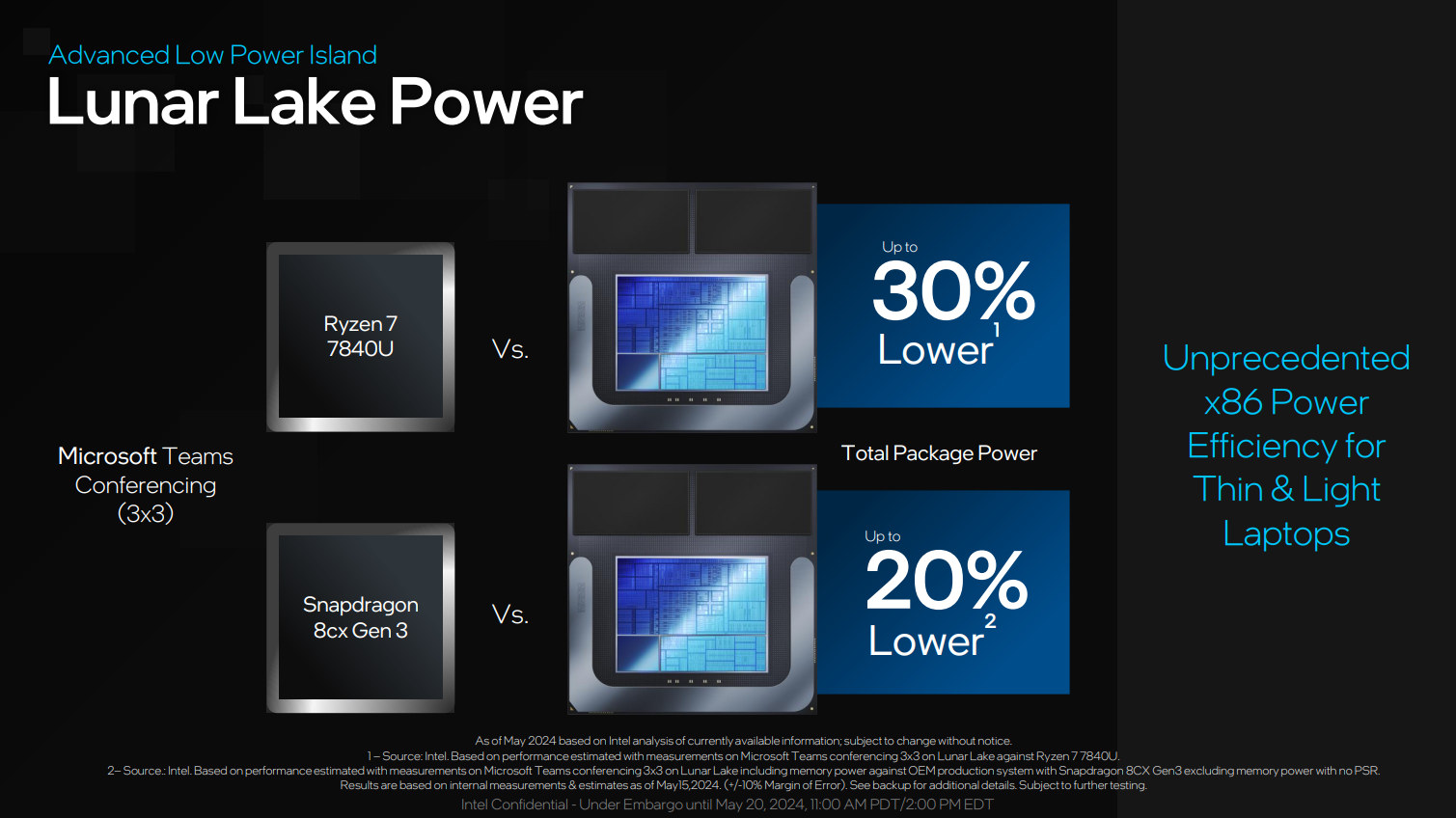
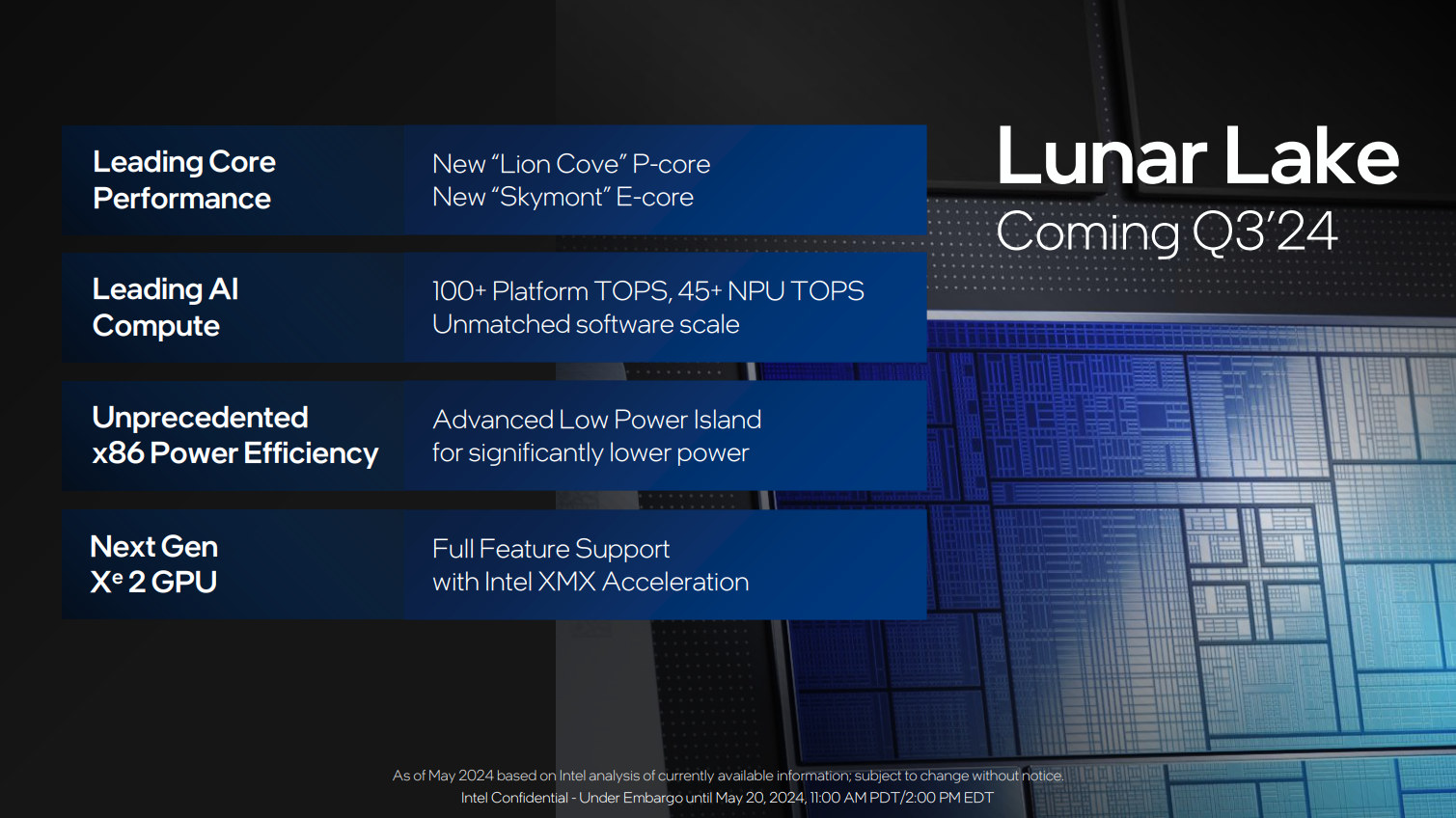
Based on its own prideful claims, Intel shipped more AI-capable processors in Q1 of 2024 than its rivals managed throughout all of 2023. Targeting Q3, 2024 for Lunar Lake is the most aggressive production timeline it's set in a while, targeting an ultra-fast turnaround and delivering new AI laptops into Q4. Coming up against Qualcomm's outrageously low-power offerings in the Snapdragon X Elite and X Plus, Lunar Lake promises a "radical" low-power architecture, claiming "you've probably never seen x86 power characteristics quite like this."
While Qualcomm offered an extensive suite of open-access benchmarking results for Snapdragon X, Intel stuck with comparisons against competitors with tests in Microsoft Teams. Lunar Lake boasts 20-30% lower power consumption, which should be expected, but its chips were tested against a previous-generation AMD Ryzen 7 7840U and Qualcomm's older Snapdragon 8cx Gen 3 processors. Still, Intel expects to provide the fastest AI acceleration available towards the second half of 2024, plus another 50% gain in Lunar Lake GPU performance, alongside power consumption better than "anything you've ever seen before."
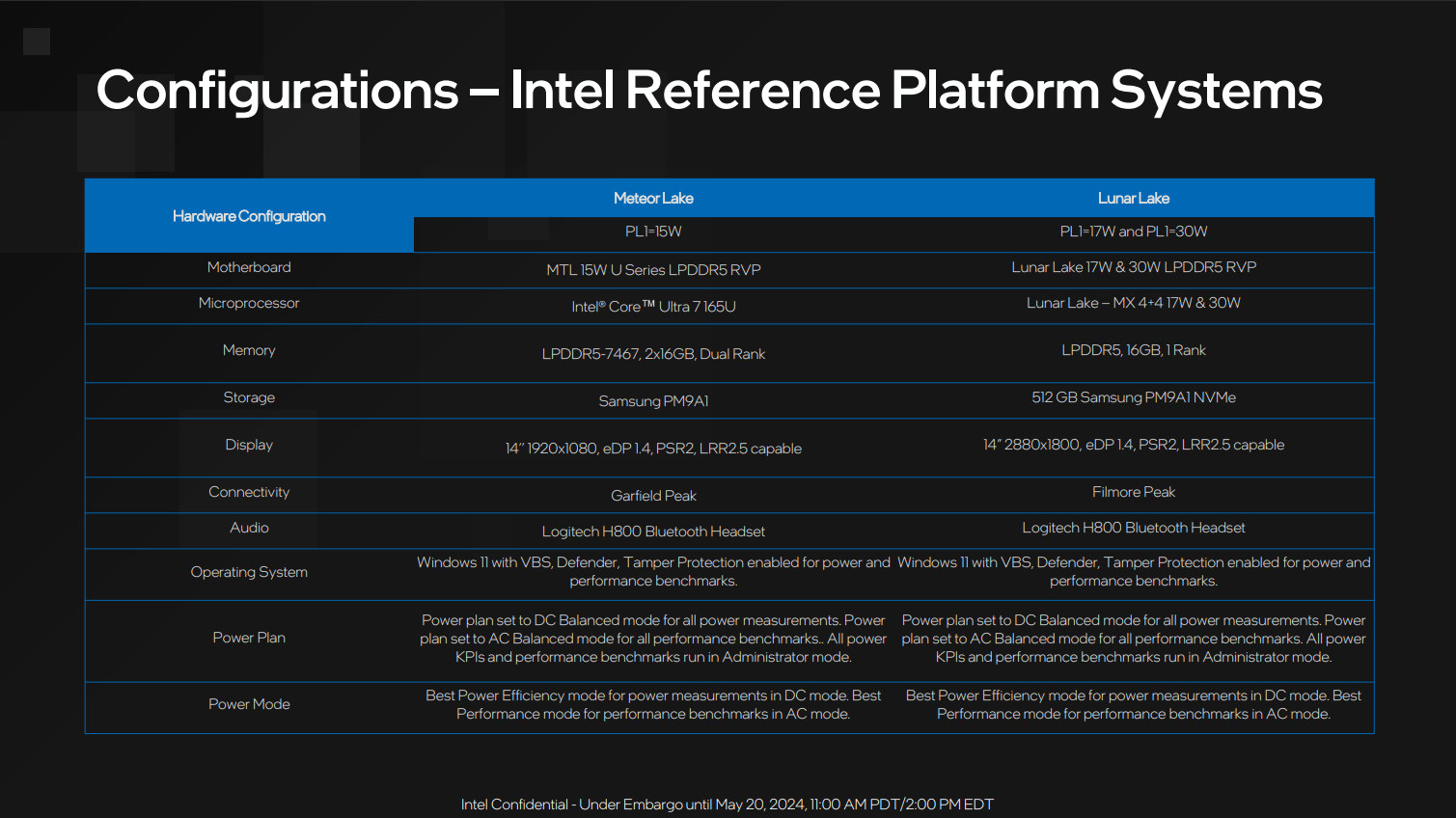
On the AI side of performance metrics, Lunar Lake is compared against Snapdragon X Elite, and Intel prides itself on x86-64 software performance. While both chips offer comparable NPUs, the Lunar Lake options could perform better with software optimization from developers already familiar with the architecture rather than learning ARM64. CPU-specific performance gains aren't being revealed yet but are classed as 'faster' in Intel's pre-briefing with confidence in its behind-the-scenes tests against Snapdragon X Elite and Ryzen 8840U.
Still pushing ahead with its "AI PC Acceleration Program," Intel continues its efforts with over 100 ISVs to bring artificial intelligence computing to "more than 100 million PCs through 2025." It has stiff competition against Qualcomm's new Snapdragon X platform, which prioritizes remarkably similar goals. Still, Lunar Lake has its appeal as an ultra-powerful player in the traditional x86-64 architecture category. I'll be meeting with Intel's team later this month to learn more about Intel's next generation of processors (and the generation after that), so stay tuned for more as this rapidly evolving generation of AI PCs continues.

Ben is a Senior Editor at Windows Central, covering everything related to technology hardware and software. He regularly goes hands-on with the latest Windows laptops, components inside custom gaming desktops, and any accessory compatible with PC and Xbox. His lifelong obsession with dismantling gadgets to see how they work led him to pursue a career in tech-centric journalism after a decade of experience in electronics retail and tech support.
-
Ben Wilson ReplyShinyProton said:Quick translation: They are late and behind.
Intel is definitely pushing its schedule up, yeah. Wafers are already under production but we haven't seen CPU-centric benchmarks yet, so the "behind" part is up in the air.
